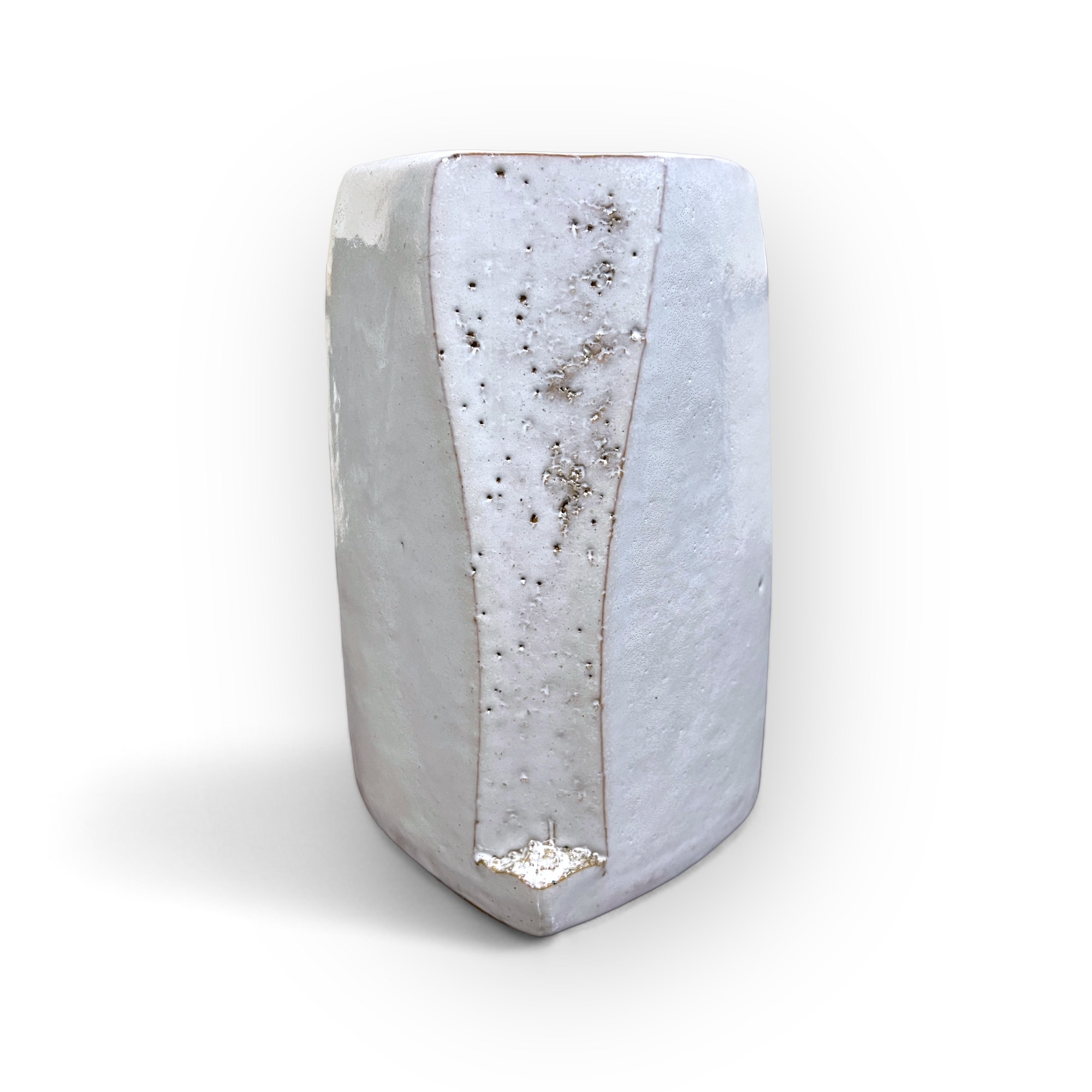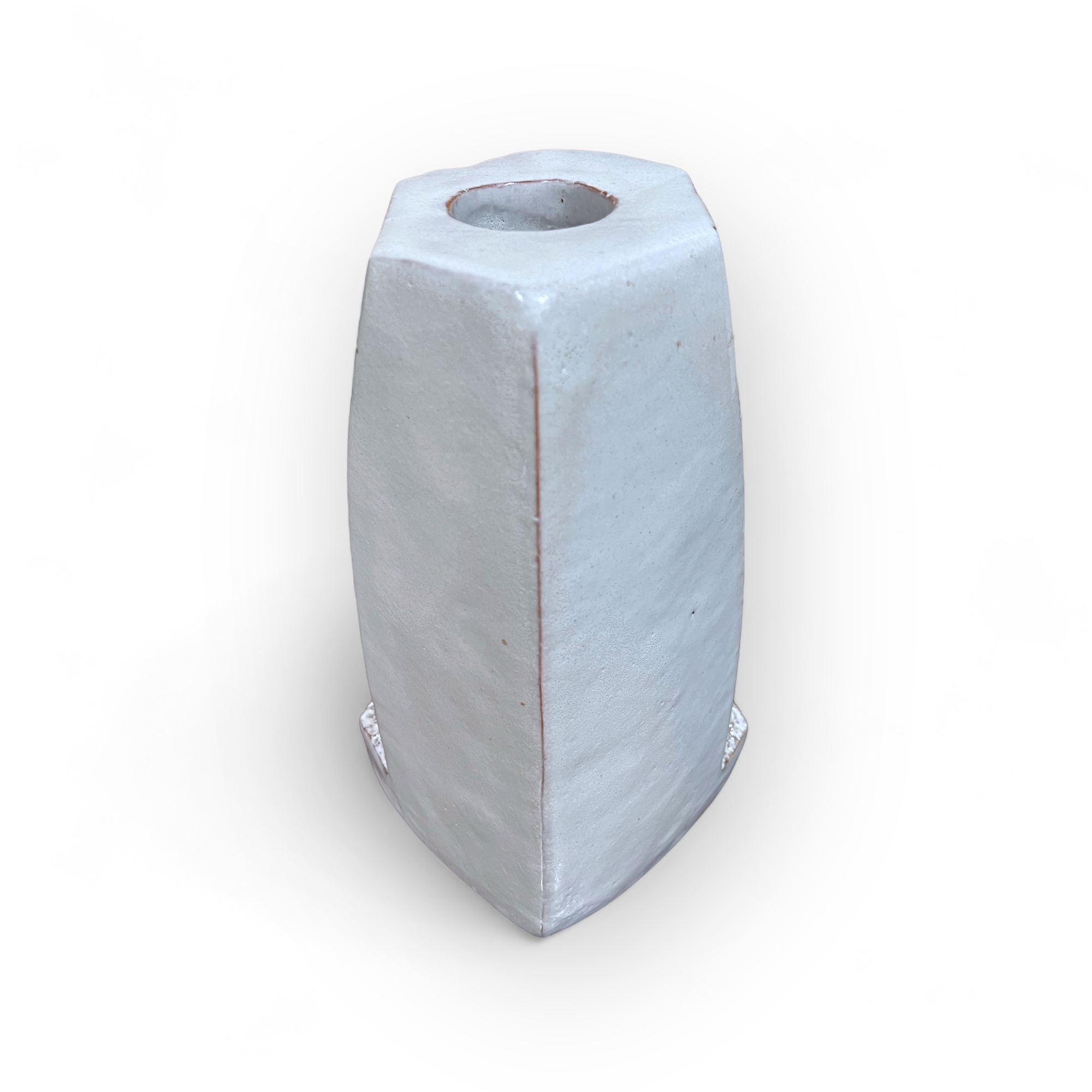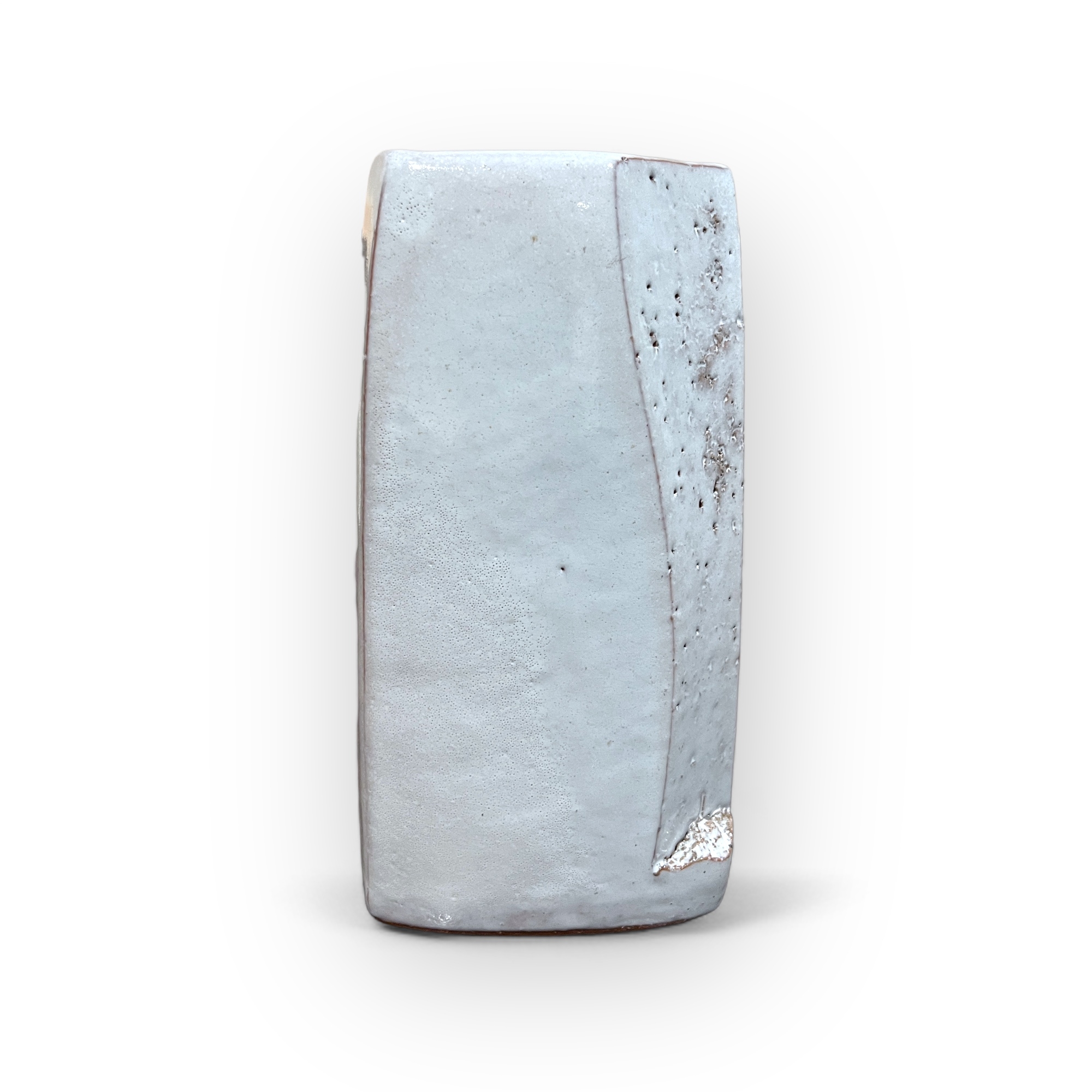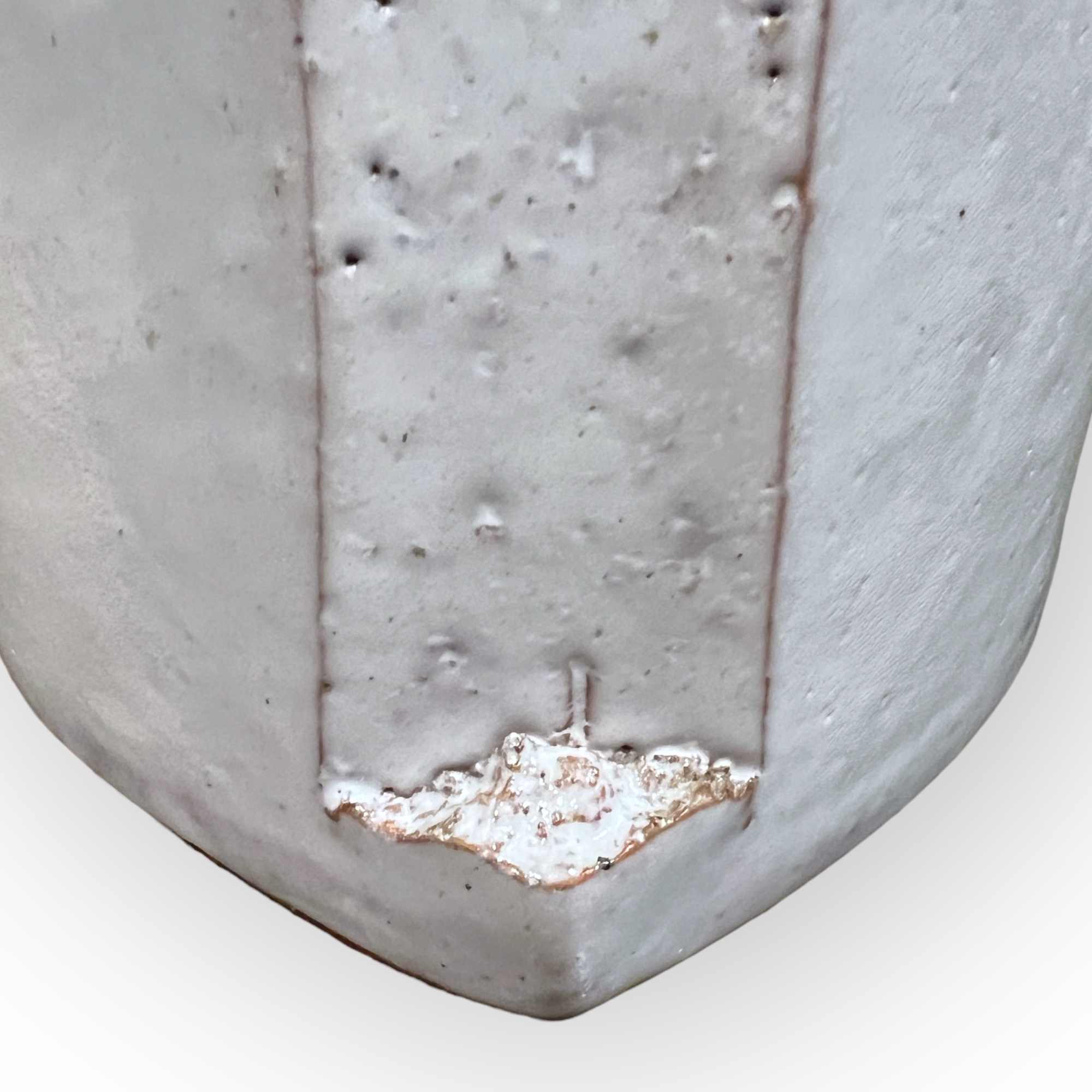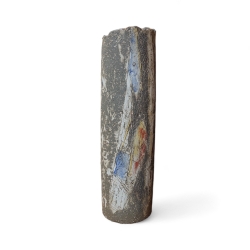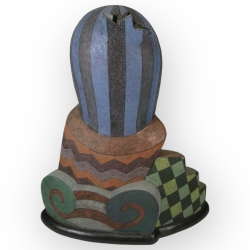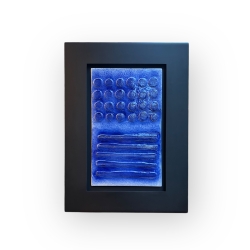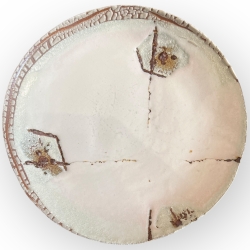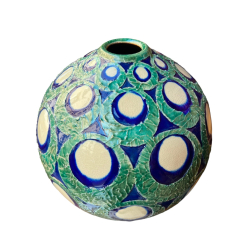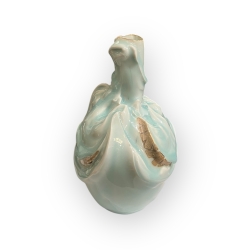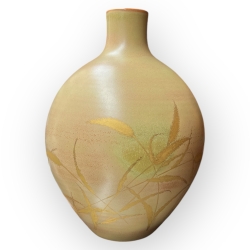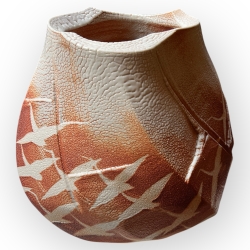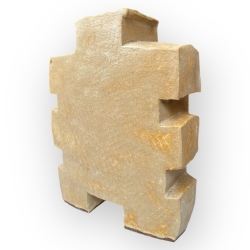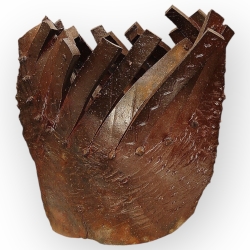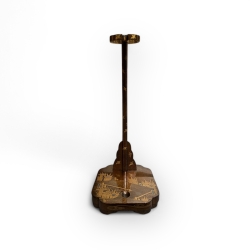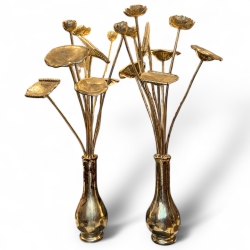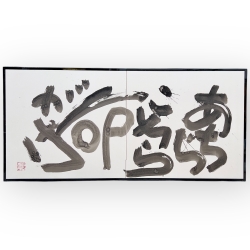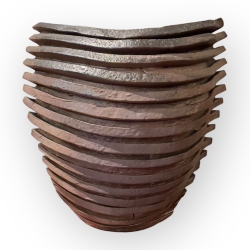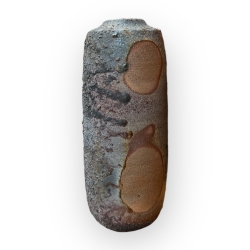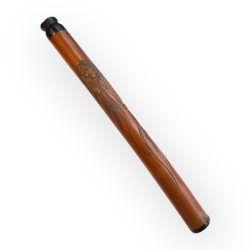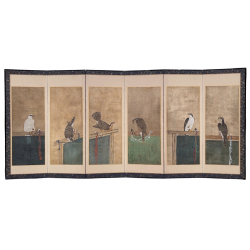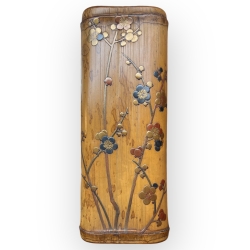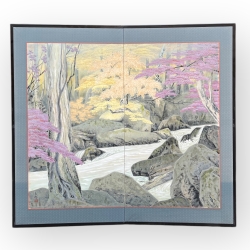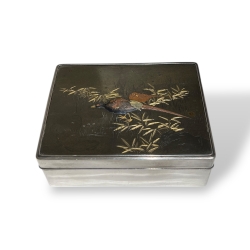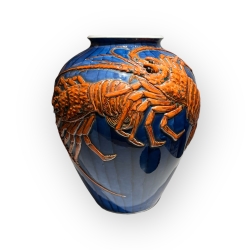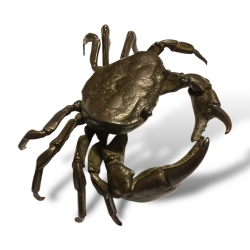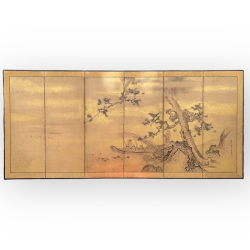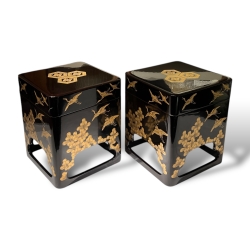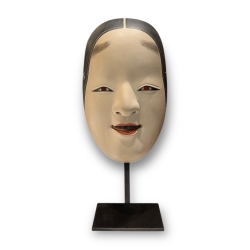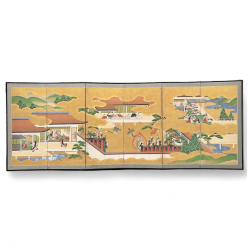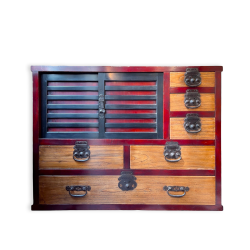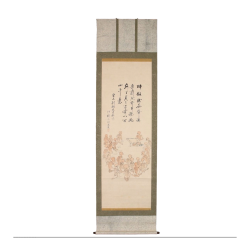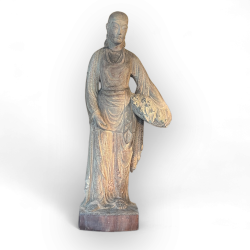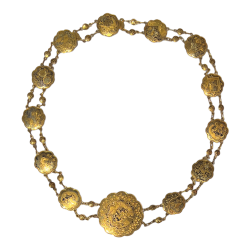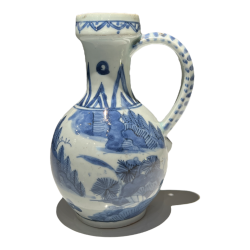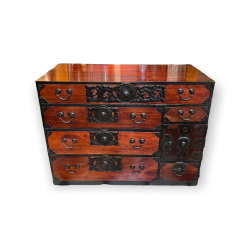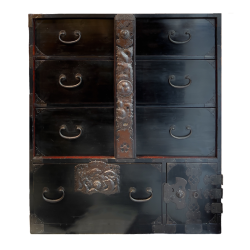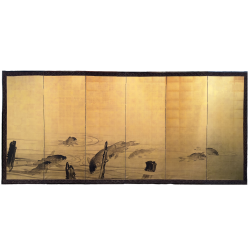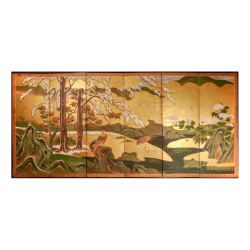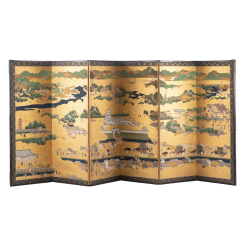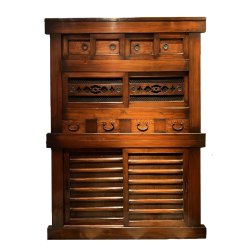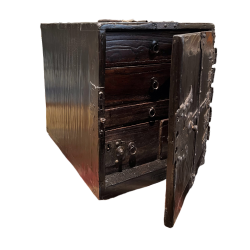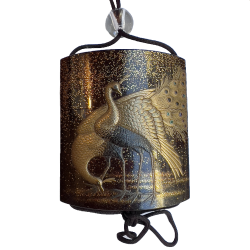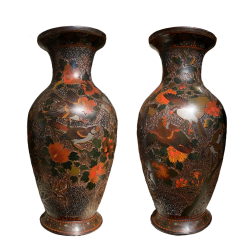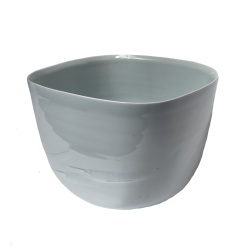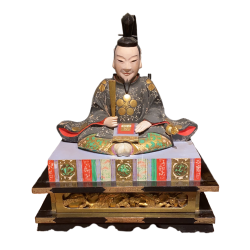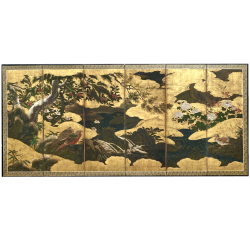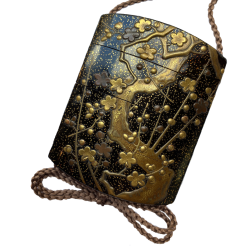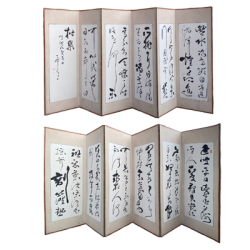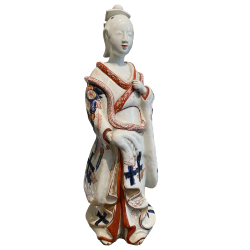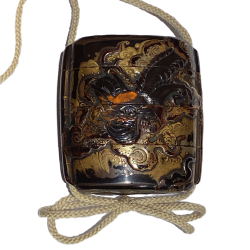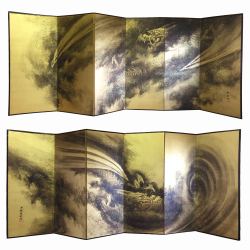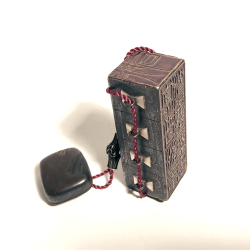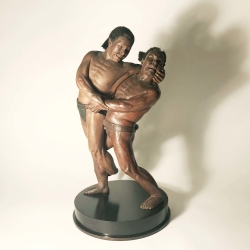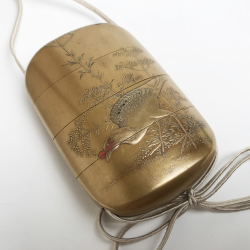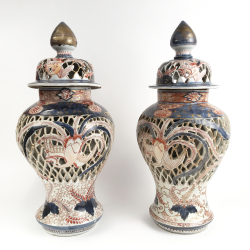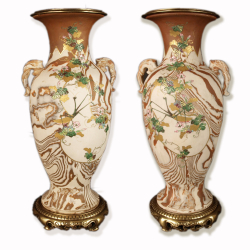
EXPERT ART d'ASIE Cristina ORTEGA Expert CNES et CEFA rts de la Chine et du Japon Asian Art-
Expert Chine Japon- Expert Asian Art - Carré Rive Gauche Paris Rue de Beaune- Expert art d Asie
Vase en céramique Eizō Miwa, 1946- 1999
Description :
Eizo Miwa
Vase en céramique Eizō Miwa, 1946- 1999
Vase en terre travaillée avec angle contrariés, glaçure blanche de Hagi et transparence de terre.
Eizo Miwa, né en 1946, était un artiste céramiste japonais renommé pour ses uvres en Hagi-yaki. Il était le deuxième fils de Miwa Kyusetsu XI, un Trésor National Vivant, et a hérité du four familial Miwa, ouvert à Hagi par Minamoto Taizaemon au début du XVIe siècle.
Diplômé de l'Université des Arts de Musashino, il était membre de la Société Japonaise des Métiers Traditionnels et exposait souvent ses uvres lors de leurs expositions nationales (Nihon Dentō Tōgeiten).
Il a reçu le premier prix lors de la prestigieuse Exposition des Formes Modernes du Thé du Musée Tanabe (Gendai Cha no Yu Zōkeiten).
Malheureusement, il est décédé en 1999 à l'âge précoce de cinquante-deux ans.
Son frère Ryōsaku (龍作) a repris le nom de famille en tant que Miwa Kyūsetsu XII (十二代休雪).
Ses uvres sont conservées dans des collections, notamment au British Museum et au Musée National d'Art Moderne de Tokyo.
Pour plus d'informations sur cet artiste, voir "The Ceramic Works of Eizo Miwa" (2001), publié à titre posthume par la galerie d'art Kuroda Tōen de Tokyo.
25x14x9,5cm
Eizō Miwa Ceramic Vase, 1946-1999
Earthenware vase with contrasting angles, Hagi white glaze, and earthenware transparency.
Eizo Miwa, born in 1946, was a Japanese ceramic artist renowned for his Hagi-yaki works. He was the second son of Miwa Kyusetsu XI, a Living National Treasure, and inherited the Miwa family kiln, opened in Hagi by Minamoto Taizaemon in the early 16th century.
A graduate of Musashino University of the Arts, he was a member of the Japan Society of Traditional Crafts and often exhibited his works at their national exhibitions (Nihon Dentō Tōgeiten).
He received first prize at the prestigious Tanabe Museum's Exhibition of Modern Tea Forms (Gendai Cha no Yu Zōkeiten). Sadly, he died in 1999 at the young age of fifty-two.
His brother Ryōsaku (龍作) took over the family name as Miwa Kyūsetsu XII (十二代休雪).
His works are held in collections including the British Museum and the National Museum of Modern Art, Tokyo.
For more information on this artist, see "The Ceramic Works of Eizo Miwa" (2001), published posthumously by the Kuroda Tōen Art Gallery, Tokyo.
25x14x9.5cm

